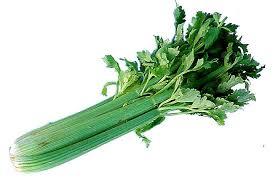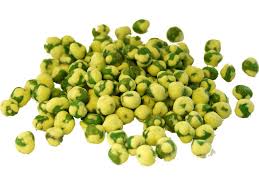10 Foods For Protecting Your Teeth And Gums
An article from worlddental.org
A beautiful smile and healthy mouth
actually can come from in addition to regular brushing and flossing a
daily diet that does not lack the essential vitamins and minerals that
make vital contributions to a persona’s oral health. Many people
overlook the importance of good nutrition in keeping their smile
beautiful and their mouth healthy. Find out 10 foods for making your
smile more healthy and beautiful
1. Celery – Protects Teeth from Cavities
Celery protects your teeth in two ways, says Lana Rozenberg, D.D.S., a holistic dentist
and founder of Rozenberg Dental Day Spa in New York City. The extra
chewing it requires produces plenty of saliva, which neutralizes the
bacteria Streptococcus mutans that causes cavities. Additionally,
chomping on naturally abrasive foods massages gums and cleans between
teeth. Try This: Snack on a handful of raw celery or carrots once a day
for protect gums and teeth.
2. Cheese – Preserves and Rebuild Tooth Enamel
Studies from the last decade show that cheese, with its low
carbohydrate and high calcium and phosphate content, provides several benefits for your teeth.
It helps balance your mouth”s pH (an acidic pH encourages the growth of
dental cavity-causing bacteria). Cheese also preserves and rebuilds tooth enamel
and produces saliva, which kills the bacteria that cause dental
cavities and gum disease. Try This: Enjoy a 1-inch cube (about 1/2
ounce) of cheese after dinner instead of a sweet dessert.
3. Green Tea – Removes Plaque and Bad Breath
Green tea (Camellia sinensis) contains substances called catechins
that kill the bacteria in your mouth that turn sugar into plaque (a
sticky mass of bacteria, sugars, proteins, and fats that produces
cavity-causing acid when it comes in contact with sugary or starchy
foods). Catechins also wipe out the bacteria that cause bad breath. Try
This: Drink 2 to 5 cups of green tea (regular or decaffeinated) a day,
says Mindy Green, director of research at the Herb Research Foundation
in Boulder, Colo. Consider making a thermos of green tea to drink at
work. The night before, steep 3 to 4 green tea bags in 4 cups of
boiling-hot water in a covered thermos for three to five minutes. Remove
the bags. Serve the tea the next day over ice or after reheating it.
4. Kiwis – Prevents Gum Disease 
For their size, kiwis pack more vitamin C than any other fruit. In
fact, one large kiwi supplies more than 100 percent of your recommended
daily amount. If you don”t get enough vitamin C, research shows that the
collagen network in your gums can break down, making your gums tender
and more susceptible to the bacteria that cause periodontal (gum)
disease. Try This: Instead of topping your morning oatmeal with brown
sugar, use a sliced kiwi.
Onions contain powerful antibacterial sulfur compounds. In a 1997
test tube study, onions killed various types of bacteria, including S.
mutans. Research indicates that they are most powerful when eaten
freshly peeled and raw. Of course, raw onions can do a number on your
breath, so be sure to have some fresh parsley on hand (see below). Try
This: Add a few onion slices to salads and sandwiches each day.
6. Parsley – Bad Breath Remedy and Sweet-Smelling Breath Creator
Chewing parsley or mint leaves after a pungent meal will help you
maintain sweet-smelling breath. These herbs contain monoterpenes,
volatile substances that travel quickly from your bloodstream to your
lungs, where their odor is released via your breath. Try This: Top zesty
dishes with a few tablespoons of minced fresh parsley or garnish
dessert with a few sprigs of fresh mint.
7. Sesame Seeds – Cleaning Teeth and Removing Plaque
According to fossils, our Paleolithic ancestors had great teeth.
Anthropologists suggest that this is partly due to the cleansing action
of primitive foods like seeds, which slough off plaque and help build
tooth enamel. Sesame seeds, for example, are also high in calcium, which
helps preserve the bone around your teeth and gums. Try This: Sprinkle a
tablespoon of sesame seeds on salads and steamed vegetables a few times
a week for a gentle teeth cleaning and 87 mg of calcium.
A 2000 study in Caries Research showed that lentinan, a sugar found in shiitake mushrooms, prevents mouth bacteria from creating plaque. Try This: A few times a week, add four to five sliced shiitakes to soups or stir-fries. Buy fresh shiitakes or dried ones, which can be reconstituted by soaking them in hot water for about 25 minutes before use.
9. Wasabi – Protect Teeth from Cavities
Otherwise known as Japanese horse-radish, this condiment not only
provides zing to sushi, it also protects your teeth. A 2000 study in
Biofactors revealed that the substances that make wasabi taste hot,
called isothiocyanates, also inhibit the growth of cavity-causing
bacteria. Try This: Eating wasabi a few times a week will protect you
from cavities. For a smile-saving salad dressing, combine 3 tablespoons
rice wine vinegar, 1 tablespoon honey, 1 teaspoon wasabi paste, 1
teaspoon soy sauce, and 1/2 teaspoon sesame oil.
10. Water – Keeps Teeth and Gums Health
Drinking water keeps your gums hydrated and is the best
way to stimulate saliva – your body”s greatest defense against the
bacteria that cause plaque and cavities. Rinsing your mouth with water
also helps wash away trapped food particles that decompose in the mouth
and cause bad breath. Try This: Aim to drink six 8-ounce glasses of
purified water throughout each day to keep your gums (and whole body)
hydrated and to stimulate saliva. If you can”t brush your teeth after
eating, be sure to rinse your mouth with water.



